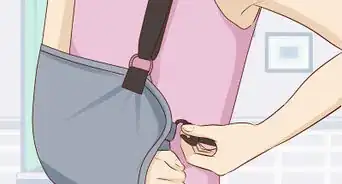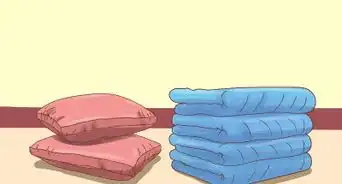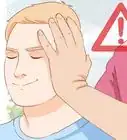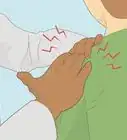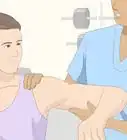This article was medically reviewed by Kevin Stone, MD. Dr. Kevin Stone is an orthopaedic surgeon and the founder of The Stone Clinic, a leading orthopaedic surgery, sports medicine, and rehabilitation clinic in the San Francisco Bay Area. With over 30 years of experience, Dr. Stone specializes in knee, shoulder, and ankle repair, using biologic reconstruction and joint replacement. He holds a BS in Biology from Harvard University and a Doctor of Medicine (MD) from the University of North Carolina at Chapel Hill. Dr. Stone completed his residency in Internal Medicine and Orthopaedic Surgery at Harvard University and in General Surgery at Stanford University. He then completed a fellowship in Orthopaedic Research and Surgery at the Hospital for Special Surgery and Tahoe Orthopaedics. He lectures around the world as an expert in cartilage and meniscal growth, replacement, and repair and holds over 40 U.S. patents on novel inventions to improve healthcare. Dr. Stone is a physician for Smuin Ballet and has served as a physician for the U.S. Ski Team, the U.S. Pro Ski Tour, the United States Olympic Training Center, and World Pro Ski Tour.
There are 10 references cited in this article, which can be found at the bottom of the page.
This article has been viewed 26,072 times.
When you dislocate your shoulder, your bone slips out of the joint. Obviously you want to prevent that painful experience! The main ways you can prevent it are to work on your shoulder strength, including the muscles around your scapula, rotator cuff, and deltoid.[1] You should also wear protective gear when playing sports and avoid falls. If your shoulder is already injured and you're trying to prevent a recurrence, take steps to let your shoulder heal properly to help prevent re-injury.
Steps
Building up Strength in Your Shoulder
-
1Press inward and outward with your arm to strengthen your rotator cuff.[2] With your elbow at a 90-degree angle, your upper arm against your body, and your other hand directly in front of you, press inward against your other hand. Hold for 5 seconds. With your arm in the same 90-degree angle, press outward against a wall or other solid surface for 5 seconds. Do this 20 times apiece, then repeat with the other arm.[3]
- This exercise, along with using a resistance band and doing rotations with dumbbells (both described in this section), help strengthen the rotator cuff. Strengthening the muscles around your shoulder can reduce the likelihood of dislocating your shoulder. Repeat all these exercises up to 5 times a day.[4]
-
2Use a resistance band to exercise your rotator cuff. Attach a resistance band to a solid object, like the knob of a closed door. Stand with your side facing the band, the elbow closest to the door at a 90-degree angle, and that upper arm against your body. Pull the band inward toward the center of your body for 5 seconds, but keep your upper arm secure against your ribs. Repeat this 20 times, then turn around and switch to the other arm.[5]
- After that, attach a longer resistance band to the solid object -- or, if necessary, hold a shorter band securely in the hand you're not exercising with. Stand in the same position as before. This time, however, grab the band with your arm that's furthest from the doorknob. Pull outward while keeping your upper arm against your ribs, repeat 20 times, and switch arms.
Advertisement -
3Do rotational exercises with dumbbells. Lie down on your side on a bench. Place a dumbbell in the arm that you're lying on, which should be bent at the elbow at a right angle. Lift the dumbbell up to your chest, rotating your arm inward. Repeat 20 times. Switch to the other arm, starting with the dumbbell at your chest. Keep your upper arm against your side while you rotate your forearm and lift the dumbbell upwards. Repeat 20 times. Move to the other side and repeat the whole process.[6]
- You can use filled water bottles or cans of food in place of dumbbells.
-
4Start with a bar exercise for your scapular muscles. You can use a very light bar at first, or even a cane or broomstick. Lie down on your back, and hold the bar just over your upper chest with your fists close together (or even touching). Lift the bar upward until your arms extend fully. Lift your shoulder blades up and lower them back down. Then, lower your arms back down. Repeat 20 times.[7]
- By lifting your shoulder blades, you're working to develop your scapular muscles. These muscles help balance the ball in the socket of your shoulder joint. That means strengthening them is also essential for keeping your shoulder from dislocating.[8]
-
5Do a one-arm press. Lie on your back, and hold a dumbbell in one arm in front of that same shoulder. Press it upwards until your arm is fully extended. Repeat 20 times. Do this exercise with both arms.[9]
- For an even more thorough workout, move up to an inclined position, and repeat this exercise. Then, do this exercise while sitting up or standing, again by pressing upward.
-
6Try a weighted shrug. Hold weights in your hands while standing. Your arms should be at your side, palms facing forward, with the weights against your upper legs. Lift both shoulders up in a shrug, and then release. Repeat 20 times.[10]
-
7Use a dumbbell while on your stomach. Lie on your belly, and hold a weight in one hand behind your back. Press the weight upward away from your body. Repeat 20 times and switch sides.[11]
-
8Try a rotational swing. Lean one arm on a table with just that side facing the table. Hold a weight in your other arm, resting it against your upper leg. Lift the weight out to the side, and slowly bring it back in. Repeat 20 times, and then move to the other side.[12]
-
9Make cardiovascular exercise a regular part of your routine. Strength training will improve your shoulder muscles, but so will cardio workouts.[13] They will also increase your flexibility. Aim for 30 minutes of exercise most days of the week. Pick exercises that work your upper body, such as swimming, tennis, or basketball.
Protecting Your Shoulder
-
1Avoid falls when you can. Of course, no one can avoid every fall. However, you can try to be more careful, since falls are a common cause of shoulder dislocations. Pay attention when you're walking, so you notice anything in your path. Also, make sure to wear stable shoes, so you don't lose your balance as easily.[14]
- If you do fall, don't try to break your fall with your hand or elbow, which can dislocate your shoulder. Keep your wrists and elbows bent, and try to twist so you land on your side or buttocks, avoiding your back.[15]
-
2Wear protective shoulder pads and other protective gear for sports. One of the main causes of shoulder dislocations is traumatic injury. These types of injuries often happen in sports, so wearing protective gear, particularly on and near your shoulders, can help protect you against a shoulder dislocation.[16]
- When putting on your gear, make sure that it fits you correctly, and that you are putting it on properly. If you don't know how, ask someone, or do a quick internet search to find out more.
-
3Stay out of the game until you can use your shoulder properly. When you're playing a sport where you use your shoulder often, stay off the field when your shoulder is out of commission. If you can't use your shoulder properly, you risk injuring other parts of your body, whether you're tackling in rugby or football, checking in hockey, or throwing in basketball or baseball.
- For instance, the new method of tackling in football requires you to keep your head up to reduce the possibility of concussions. That means your shoulder takes the brunt of the hit. Keeping your head safe is more important, so don't play when you can't use your shoulders.[17]
Preventing Shoulder Reinjury after a Dislocation
-
1Visit your doctor. You should never try to treat a dislocation at home. Visit the ER if you suspect you have a shoulder dislocation. The doctor will likely try to push your shoulder back in place, once you have been given medications for the pain.
- You may also need surgery, though your doctor will usually only make this recommendation if you have repeated injuries.
-
2Use ice and heat. For the first couple of days, it's recommended that you use ice on your shoulder to reduce inflammation and pain. Use a bag of peas or ice wrapped in a towel for 20 to 30 minutes every few hours. After 2-3 days, when the swelling is reduced and the pain has improved, try heat. Use a heating pad or hot packs for 20 minutes at a time.[18]
-
3Keep your shoulder in a sling for up to 4 weeks. Depending on your age and the nature of the injury, you will need to keep your shoulder in a sling for anywhere from 1 to 4 weeks. Your doctor will help you determine how long you should rest your arm.
-
4Visit a physical therapist. One part of recovery will be learning range-of-motion exercises to gently stretch your shoulder. These exercises will help you get mobility back in your shoulder, and they are specifically designed to keep you from re-injuring your shoulder. However, you should always do them under the direction of a physical therapist to help prevent re-injury.
- You'll likely do exercises like the pendulum exercise, where you lay the top half of your body on a table propped on the non-injured arm. Hang the arm of the injured shoulder straight down off the table. Swing the arm clockwise and counter-clockwise, and then like a pendulum forward and back.[19]
- You should visit a physical therapist even before you're out of the sling. They can help you perform range-of-motion exercises for you elbow, hand, and wrist.[20]
-
5Ask your therapist about massage. Often, your physical therapist will apply gentle massage techniques to your shoulder. The massaging can help with stiffness and pain, assisting you with regaining motion in your arm.
Expert Q&A
Did you know you can get expert answers for this article?
Unlock expert answers by supporting wikiHow
-
QuestionHow do you prevent dislocation at home?
 Kevin Stone, MDDr. Kevin Stone is an orthopaedic surgeon and the founder of The Stone Clinic, a leading orthopaedic surgery, sports medicine, and rehabilitation clinic in the San Francisco Bay Area. With over 30 years of experience, Dr. Stone specializes in knee, shoulder, and ankle repair, using biologic reconstruction and joint replacement. He holds a BS in Biology from Harvard University and a Doctor of Medicine (MD) from the University of North Carolina at Chapel Hill. Dr. Stone completed his residency in Internal Medicine and Orthopaedic Surgery at Harvard University and in General Surgery at Stanford University. He then completed a fellowship in Orthopaedic Research and Surgery at the Hospital for Special Surgery and Tahoe Orthopaedics. He lectures around the world as an expert in cartilage and meniscal growth, replacement, and repair and holds over 40 U.S. patents on novel inventions to improve healthcare. Dr. Stone is a physician for Smuin Ballet and has served as a physician for the U.S. Ski Team, the U.S. Pro Ski Tour, the United States Olympic Training Center, and World Pro Ski Tour.
Kevin Stone, MDDr. Kevin Stone is an orthopaedic surgeon and the founder of The Stone Clinic, a leading orthopaedic surgery, sports medicine, and rehabilitation clinic in the San Francisco Bay Area. With over 30 years of experience, Dr. Stone specializes in knee, shoulder, and ankle repair, using biologic reconstruction and joint replacement. He holds a BS in Biology from Harvard University and a Doctor of Medicine (MD) from the University of North Carolina at Chapel Hill. Dr. Stone completed his residency in Internal Medicine and Orthopaedic Surgery at Harvard University and in General Surgery at Stanford University. He then completed a fellowship in Orthopaedic Research and Surgery at the Hospital for Special Surgery and Tahoe Orthopaedics. He lectures around the world as an expert in cartilage and meniscal growth, replacement, and repair and holds over 40 U.S. patents on novel inventions to improve healthcare. Dr. Stone is a physician for Smuin Ballet and has served as a physician for the U.S. Ski Team, the U.S. Pro Ski Tour, the United States Olympic Training Center, and World Pro Ski Tour.
Board Certified Orthopaedic Surgeon
-
QuestionHow do you fix a dislocated shoulder without surgery?
 Kevin Stone, MDDr. Kevin Stone is an orthopaedic surgeon and the founder of The Stone Clinic, a leading orthopaedic surgery, sports medicine, and rehabilitation clinic in the San Francisco Bay Area. With over 30 years of experience, Dr. Stone specializes in knee, shoulder, and ankle repair, using biologic reconstruction and joint replacement. He holds a BS in Biology from Harvard University and a Doctor of Medicine (MD) from the University of North Carolina at Chapel Hill. Dr. Stone completed his residency in Internal Medicine and Orthopaedic Surgery at Harvard University and in General Surgery at Stanford University. He then completed a fellowship in Orthopaedic Research and Surgery at the Hospital for Special Surgery and Tahoe Orthopaedics. He lectures around the world as an expert in cartilage and meniscal growth, replacement, and repair and holds over 40 U.S. patents on novel inventions to improve healthcare. Dr. Stone is a physician for Smuin Ballet and has served as a physician for the U.S. Ski Team, the U.S. Pro Ski Tour, the United States Olympic Training Center, and World Pro Ski Tour.
Kevin Stone, MDDr. Kevin Stone is an orthopaedic surgeon and the founder of The Stone Clinic, a leading orthopaedic surgery, sports medicine, and rehabilitation clinic in the San Francisco Bay Area. With over 30 years of experience, Dr. Stone specializes in knee, shoulder, and ankle repair, using biologic reconstruction and joint replacement. He holds a BS in Biology from Harvard University and a Doctor of Medicine (MD) from the University of North Carolina at Chapel Hill. Dr. Stone completed his residency in Internal Medicine and Orthopaedic Surgery at Harvard University and in General Surgery at Stanford University. He then completed a fellowship in Orthopaedic Research and Surgery at the Hospital for Special Surgery and Tahoe Orthopaedics. He lectures around the world as an expert in cartilage and meniscal growth, replacement, and repair and holds over 40 U.S. patents on novel inventions to improve healthcare. Dr. Stone is a physician for Smuin Ballet and has served as a physician for the U.S. Ski Team, the U.S. Pro Ski Tour, the United States Olympic Training Center, and World Pro Ski Tour.
Board Certified Orthopaedic Surgeon
-
QuestionCan a dislocation fix itself?
 Kevin Stone, MDDr. Kevin Stone is an orthopaedic surgeon and the founder of The Stone Clinic, a leading orthopaedic surgery, sports medicine, and rehabilitation clinic in the San Francisco Bay Area. With over 30 years of experience, Dr. Stone specializes in knee, shoulder, and ankle repair, using biologic reconstruction and joint replacement. He holds a BS in Biology from Harvard University and a Doctor of Medicine (MD) from the University of North Carolina at Chapel Hill. Dr. Stone completed his residency in Internal Medicine and Orthopaedic Surgery at Harvard University and in General Surgery at Stanford University. He then completed a fellowship in Orthopaedic Research and Surgery at the Hospital for Special Surgery and Tahoe Orthopaedics. He lectures around the world as an expert in cartilage and meniscal growth, replacement, and repair and holds over 40 U.S. patents on novel inventions to improve healthcare. Dr. Stone is a physician for Smuin Ballet and has served as a physician for the U.S. Ski Team, the U.S. Pro Ski Tour, the United States Olympic Training Center, and World Pro Ski Tour.
Kevin Stone, MDDr. Kevin Stone is an orthopaedic surgeon and the founder of The Stone Clinic, a leading orthopaedic surgery, sports medicine, and rehabilitation clinic in the San Francisco Bay Area. With over 30 years of experience, Dr. Stone specializes in knee, shoulder, and ankle repair, using biologic reconstruction and joint replacement. He holds a BS in Biology from Harvard University and a Doctor of Medicine (MD) from the University of North Carolina at Chapel Hill. Dr. Stone completed his residency in Internal Medicine and Orthopaedic Surgery at Harvard University and in General Surgery at Stanford University. He then completed a fellowship in Orthopaedic Research and Surgery at the Hospital for Special Surgery and Tahoe Orthopaedics. He lectures around the world as an expert in cartilage and meniscal growth, replacement, and repair and holds over 40 U.S. patents on novel inventions to improve healthcare. Dr. Stone is a physician for Smuin Ballet and has served as a physician for the U.S. Ski Team, the U.S. Pro Ski Tour, the United States Olympic Training Center, and World Pro Ski Tour.
Board Certified Orthopaedic Surgeon
References
- ↑ Kevin Stone, MD. Board Certified Orthopaedic Surgeon. Expert Interview. 19 November 2020.
- ↑ Kevin Stone, MD. Board Certified Orthopaedic Surgeon. Expert Interview. 19 November 2020.
- ↑ http://www.orthop.washington.edu/?q=patient-care/articles/shoulder/home-exercises-for-the-unstable-shoulder.html
- ↑ http://www.orthop.washington.edu/?q=patient-care/articles/shoulder/home-exercises-for-the-unstable-shoulder.html
- ↑ http://www.orthop.washington.edu/?q=patient-care/articles/shoulder/home-exercises-for-the-unstable-shoulder.html
- ↑ http://www.orthop.washington.edu/?q=patient-care/articles/shoulder/home-exercises-for-the-unstable-shoulder.html
- ↑ http://www.orthop.washington.edu/?q=patient-care/articles/shoulder/home-exercises-for-the-unstable-shoulder.html
- ↑ http://www.orthop.washington.edu/?q=patient-care/articles/shoulder/home-exercises-for-the-unstable-shoulder.html
- ↑ http://www.orthop.washington.edu/?q=patient-care/articles/shoulder/home-exercises-for-the-unstable-shoulder.html
- ↑ http://www.orthop.washington.edu/?q=patient-care/articles/shoulder/home-exercises-for-the-unstable-shoulder.html
- ↑ http://www.orthop.washington.edu/?q=patient-care/articles/shoulder/home-exercises-for-the-unstable-shoulder.html
- ↑ http://www.orthop.washington.edu/?q=patient-care/articles/shoulder/home-exercises-for-the-unstable-shoulder.html
- ↑ https://www.mayoclinic.org/diseases-conditions/dislocated-shoulder/symptoms-causes/syc-20371715
- ↑ https://www.mayoclinic.org/diseases-conditions/dislocated-shoulder/symptoms-causes/syc-20371715
- ↑ http://nasdonline.org/211/d000006/preventing-injuries-from-slips-trips-and-falls.html
- ↑ https://medlineplus.gov/dislocations.html
- ↑ http://www.espn.com/espn/otl/story/_/id/10276129/popular-nfl-backed-heads-tackling-method-questioned-former-players
- ↑ https://www.mayoclinic.org/diseases-conditions/dislocated-shoulder/diagnosis-treatment/drc-20371720
- ↑ https://orthoinfo.aaos.org/en/recovery/shoulder-surgery-exercise-guide/
- ↑ https://emedicine.medscape.com/article/93323-treatment#d10


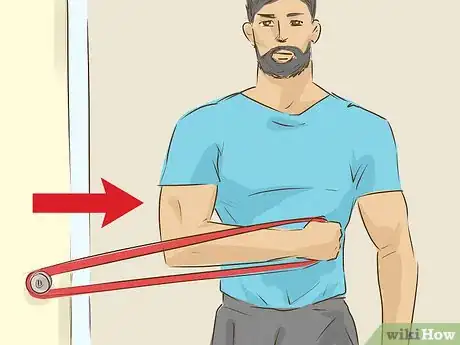
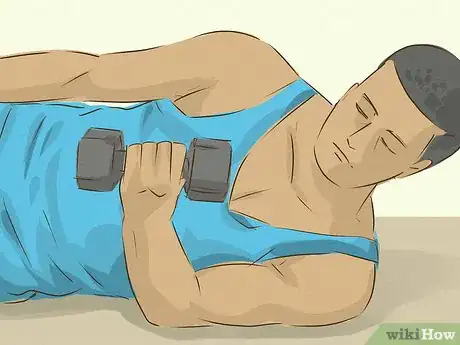








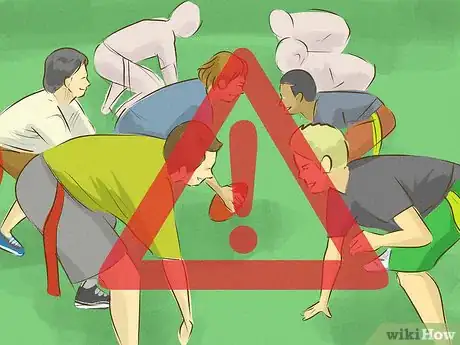

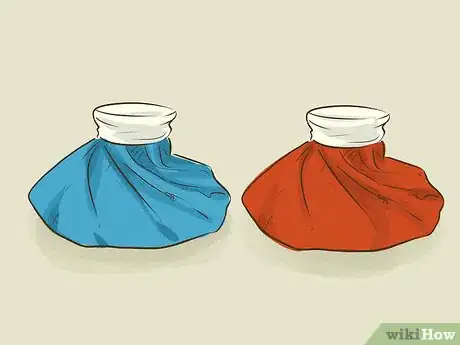





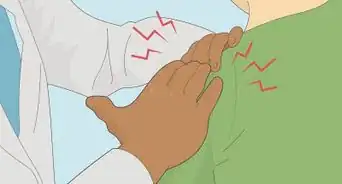
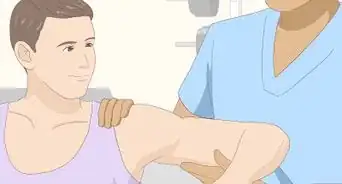
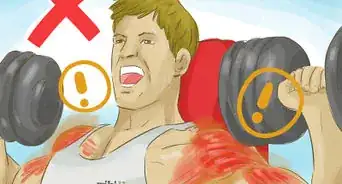
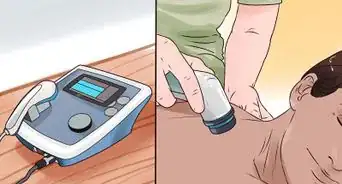
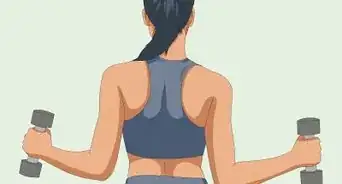
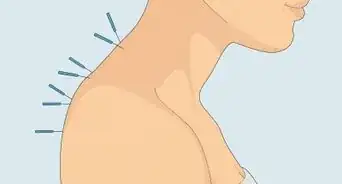
-Step-3-Version-3.webp)
